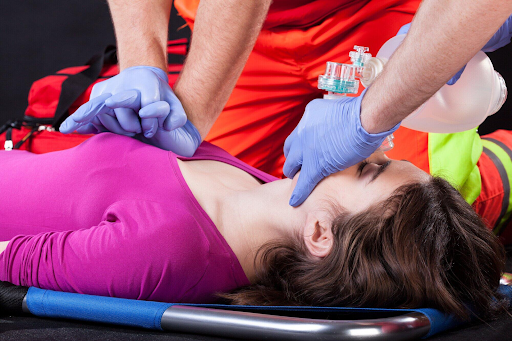Have you ever wondered how crucial hand placement in CPR is?
The effectiveness of this life-saving technique can hinge on where and how you position your hands. Understanding the correct methods not only increases the chances of survival for someone in cardiac arrest. It also empowers you to act confidently in an emergency.
Learn more about the importance of hand placement and prepare yourself to save a life when it matters most.
CPR Hand Placement Techniques
Correct hand placement is key in performing CPR. You should first find the center of the person’s chest. This spot is usually just below the nipples.
For adults, use two hands, one on top of the other. Keep your elbows straight and push down hard and fast. For children, you can use one hand if they are small.
Always remember to call for help and, if possible, use an AED if one is nearby. Getting a BLS Certification can teach you these skills and give you the confidence to help in life-threatening emergencies.
Adult CPR Guidelines
When performing CPR on adults, start by checking if the person is conscious. If they are not responsive, call 911 right away.
Next, place your hands on their chest as described earlier. Keep your shoulders above your hands. Press down hard and fast, aiming for a rate of about 100 to 120 compressions per minute.
Allow the chest to rise completely after each push. After every 30 compressions, give the person 2 breaths if you are trained to do so.
Child and Infant Considerations
When giving CPR to children or infants, it is important to adjust your technique. For infants, use two fingers to press down in the center of their chest. Push gently, about 1.5 inches deep.
You should aim for a rate of 100 to 120 compressions per minute. After every 30 compressions, you can give 2 gentle breaths. Cover their mouth and nose with your mouth when breathing for an infant.
For small children, use one hand for compressions if needed. Always call for help quickly and keep going until a healthcare professional arrives or the child starts breathing.
Common Mistakes to Avoid
When performing CPR, it is easy to make mistakes. One common error is not pushing hard enough. Pressing firmly is essential to help blood flow.
Another mistake is not keeping the right pace. Aim for 100 to 120 compressions each minute. Make sure your hands are in the right spot.
If they are too low or too high, it will not work well. Avoid doing it too quickly – take your time and stay calm. Practicing these steps can help you do CPR better.
Practicing with a Simulator
Practicing CPR with a simulator is very helpful. These simulators are specifically designed to feel and act like real people. When you use them, you can practice the right placement and compression techniques.
You will learn how to push hard enough and at the correct speed. Simulators often give feedback, so you know if you are doing it right.
This practice helps build your confidence. The more you practice, the better you will be in a real emergency.
Don’t Take Hand Placement in CPR for Granted
Understanding the importance of hand placement in CPR is vital for anyone who needs to respond to an emergency. Proper technique not only improves the chances of saving a life. It also boosts the responder’s confidence.
Practice these techniques and stay informed to prepare yourself for action when every moment counts. Being ready can make all the difference!
Did you learn something new from this article? For more tips and guides, keep checking out our blog!
